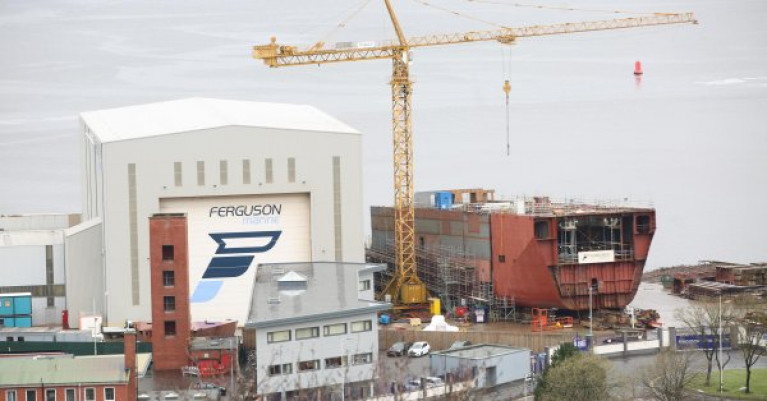Displaying items by tag: Ferguson Shipyard
Boss of CMAL Claims Money 'Effectively Wasted' on Mistakes in Scottish Shipyard Ferry Fiasco
From the outset mistakes made in the construction of two ferries delayed by over five years saw money “effectively wasted” on rebuilding units, the chief executive officer of Caledonian Maritime Assets Ltd (CMAL) said.
Kevin Hobbs claimed that the issues were down to a “catastrophic failure" of management, not a failure of the workforce.
The two vessels – the Glen Sannox (for Arran on the Clyde service) and the as-yet-unnamed hull 802 – were originally due to be completed in 2018, but have since been delayed until at least 2023.
The delays have also seen the costs soar over budgets with the latest estimated cost reaching at least £250 million.
Mr Hobbs said units were “riddled with errors” which meant extra costs went towards undoing the work and rebuilding them.
It comes after former Ferguson Marine shipyard owner Jim McColl accused the company, which handles Scottish Government ferry contracts, of blocking every attempt to carry out an independent resolution.
The Herald, in Scotland has more on the ongoing shipyard saga.
Scottish Government Loses Ferry Court Battle Over £5m Ferguson Shipyard Insurance Payout
Scottish Ministers have lost a case at the Court of Session brought by HCC International Insurance over money paid to Scottish Government-owned ferries owner Caledonian Maritime Assets Limited (Cmal).
In 2015, Cmal ordered two ferries for CalMac to be built by Ferguson’s Port Glasgow shipyard, but major delays and cost overruns led to the firm going into administration and being taken over by the Scottish Government.
The first newbuild Glen Sannox is not now expected to start operating on the main (Ardrossan-Brodick) Isle of Arran route (see related story) until summer 2022 – more than three years late.
As The Scotsman writes the unnamed sister vessel is due to enter service early in 2023 on the Skye-Harris-North Uist routes.
Their combined cost has increased from £97m to £192.8m- £196.8m.
More on the story here.


























































